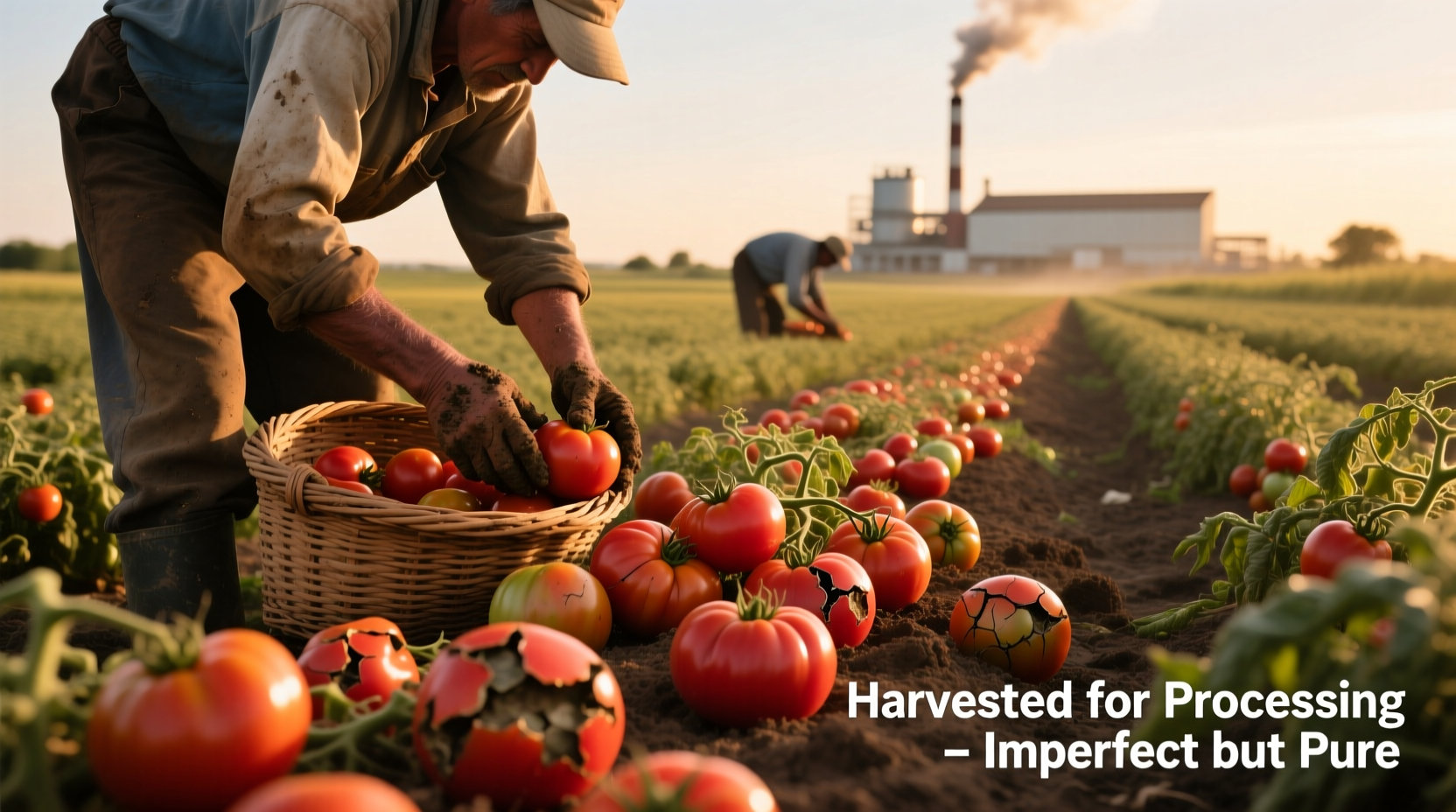Ever wonder what happens to that slightly misshapen tomato you never see at the grocery store? While consumers enjoy picture-perfect produce, a significant portion of harvested tomatoes never makes it to market due to strict cosmetic standards. Understanding why certain tomatoes become unmarketable reveals critical insights about our food system, waste reduction opportunities, and how both farmers and consumers can make more sustainable choices.
What Exactly Makes a Tomato Unmarketable?
"Unmarketable" in agricultural terms refers to produce that fails to meet specific visual and structural standards required by retailers and distributors. Unlike spoiled or rotten tomatoes, unmarketable tomatoes are typically perfectly edible and nutritious but rejected for superficial reasons:
- Size inconsistencies - falling outside specified diameter ranges
- Shape abnormalities - being too oblong, lumpy, or having "shoulders"
- Color variations - uneven ripening or slight discoloration
- Surface blemishes - minor scars, cat-facing, or small cracks
- Stem issues - improper calyx formation or stem scars
These standards originate from the USDA's voluntary grading system, where Grade A tomatoes must be "well-formed," "firm," and "free from serious defects." While these guidelines were initially created for consistency, many retailers have implemented even stricter requirements that exceed USDA standards.
| Standard Category | USDA Minimum Requirement | Typical Retailer Requirement | Actual Impact on Yield |
|---|---|---|---|
| Size Consistency | Within designated size band | Nearly identical sizing within 5% | 12-15% rejection rate |
| Shape Regularity | "Well-formed" | Perfectly round/symmetrical | 8-10% rejection rate |
| Surface Appearance | "Free from serious defects" | Completely blemish-free | 5-7% rejection rate |
| Color Uniformity | "Characteristic color" | Perfect, consistent redness | 3-5% rejection rate |
The Evolution of Cosmetic Standards: A Historical Timeline
Understanding how we arrived at today's strict cosmetic standards requires examining the historical context of produce marketing:
- 1930s-1940s: USDA establishes first voluntary grading standards focused primarily on safety and basic quality
- 1950s-1960s: Rise of supermarket chains creates demand for uniform appearance; cosmetic standards begin tightening
- 1970s-1980s: Retailers implement proprietary standards stricter than USDA guidelines
- 1990s-2000s: Global supply chains standardize cosmetic requirements worldwide
- 2010s-Present: Growing awareness of food waste leads to "ugly produce" initiatives and relaxed standards in some markets
According to research from the University of California Agriculture and Natural Resources (UC ANR, 2022), the tightening of cosmetic standards has outpaced consumer demand for perfect-looking produce. Their consumer surveys revealed that 68% of shoppers would purchase slightly imperfect tomatoes if priced 20% lower, yet retailers maintain strict standards due to perceived consumer expectations.
Where Do Unmarketable Tomatoes End Up?
When tomatoes don't meet market standards, several pathways determine their fate:
Common Disposal Methods
Unfortunately, the most common destination for unmarketable tomatoes is simply left in the field or sent to landfill. The USDA Economic Research Service reports that approximately 40% of all unmarketable produce ends up as agricultural waste, contributing significantly to methane emissions when decomposing in landfills.
Better Alternatives Gaining Traction
- Processing - Many unmarketable tomatoes get redirected to sauce, paste, or canned tomato production where appearance doesn't matter
- Food rescue programs - Organizations like Feeding America partner with farms to redirect imperfect produce to food banks
- Animal feed - Some farms use rejected tomatoes as supplemental livestock feed
- Composting - Increasingly adopted as farms recognize the soil health benefits

Practical Solutions for Reducing Tomato Waste
Addressing the unmarketable tomato problem requires action at multiple levels of the supply chain. Here's what different stakeholders can do:
For Farmers: Adjusting Production and Marketing
- Grow diverse varieties including those known for irregular shapes but excellent flavor
- Develop direct relationships with processing companies that accept imperfect produce
- Implement farm-to-community programs that sell "seconds" at reduced prices
- Explore value-added products like salsas or tomato powders using imperfect fruit
For Retailers: Rethinking Cosmetic Standards
Major grocery chains are beginning to relax cosmetic standards. In 2021, the European Union passed regulations encouraging member states to reduce food waste by accepting more imperfect produce. Similar initiatives are gaining traction in the United States through partnerships with organizations like ReFED.
For Consumers: Making Impactful Choices
- Choose "imperfect produce" options when available at grocery stores
- Shop at farmers markets where cosmetic standards are typically more relaxed
- Understand that minor imperfections don't affect taste or nutrition
- Support restaurants and brands that use "ugly" produce in their offerings
According to EPA data, if just 15% of currently unmarketable tomatoes were redirected to human consumption instead of waste streams, it would provide the equivalent of 2.3 billion meals annually (EPA Food Recovery Hierarchy, 2023).
The Future of Tomato Standards
Positive changes are emerging as awareness of food waste grows. Several states have passed legislation encouraging food donation, and major retailers are expanding their "ugly produce" programs. Technological innovations like AI-powered sorting systems can now direct imperfect produce to appropriate channels rather than automatically rejecting it.
Most importantly, consumer education is shifting perceptions. When people understand that a slightly misshapen tomato often contains the same or even higher nutrient levels than its perfect counterpart (due to less selective breeding for appearance over nutrition), they become more willing to embrace imperfect produce.











 浙公网安备
33010002000092号
浙公网安备
33010002000092号 浙B2-20120091-4
浙B2-20120091-4